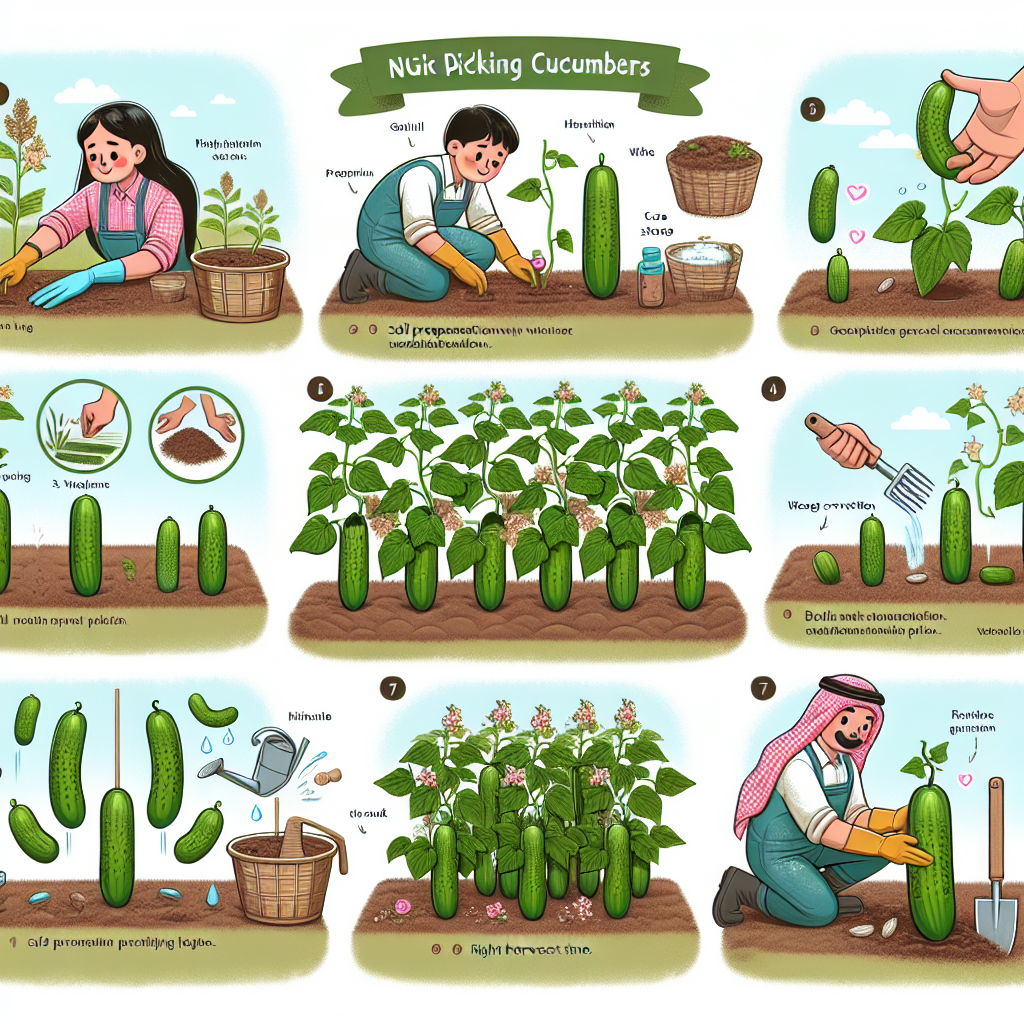
How to grow national pickling cucumbers
How to Successfully Grow National Pickling Cucumbers
If you're looking to spice up your home garden with some tangy treats, learning how to grow national pickling cucumbers can be a rewarding experience. These crunchy cucumbers are the perfect base for pickling, enhancing a variety of dishes from sandwiches to salads. In this guide, we’ll cover essential tips, from choosing the right variety to harvesting time, ensuring a bountiful cucumber crop each season.
Understanding National Pickling Cucumbers
National pickling cucumbers are specifically bred for pickling purposes. They are shorter, have a thicker skin, and contain fewer seeds than regular cucumbers, making them ideal for preserving. Their characteristics include:
- Size: Typically 4 to 6 inches
- Color: Dark green skin
- Texture: Bumpy rind that helps in brine retention
This particular variety is favored by many home gardeners and commercial growers alike. To successfully cultivate these cucumbers, let's dive into the best practices for growing them.
Choosing the Right Location
Like most vegetables, **pickling cucumbers** thrive in particular conditions. Here’s what you should consider:
Sunlight
Cucumbers love the sun. Choose a location that receives at least 6-8 hours of direct sunlight each day. Full sun helps produce sweet, juicy fruits.
Soil Quality
Good drainage is crucial for cucumber growth. They prefer a soil pH of 6.0 to 7.0. For optimal growth, enhance your soil with organic matter.
Spacing
When planting, ensure to space your cucumbers adequately. They need room to spread out. A good rule of thumb is:
- **Row Spacing**: 36 inches apart
- **Plant Spacing**: 12 inches within the row
Preparing the Soil
Before planting, you must prepare your soil. This involves a few important steps:
- Testing Soil: Consider doing a soil test to check for pH and nutrient levels.
- Tilling: Turn the soil to a depth of at least 12 inches to aerate it.
- Adding Organic Matter: Incorporate compost or aged manure to improve fertility.
Planting Your Cucumbers
Now that your soil is ready, it’s time to plant your seeds or seedlings. Here’s what you need to do:
Direct Sowing vs. Transplanting
You can either sow seeds directly into the garden or start them indoors and transplant them outside. Here’s a comparison:
| Method | Advantages | Disadvantages |
|---|---|---|
| Direct Sowing | Less work and better root establishment | Risk of poor germination if soil temperature is low |
| Transplanting | Longer growing season, better pest management | Transplant shock can occur |
Planting Seeds
If you choose to direct sow, plant the seeds 1 inch deep and water thoroughly. Ideally, do this after the last frost date in your area.
Transplanting Seedlings
If you opted for starting seedlings indoors, plant them outdoors when they are about 3-4 weeks old and have at least two sets of true leaves.
Watering and Fertilizing
Regular watering is essential for cucumbers, especially during the hot summer months. Here are some tips:
Watering Tips
- Water deeply 1-2 times a week, providing about 1-2 inches of water.
- Avoid overhead watering to minimize disease risk; use drip irrigation instead.
- Monitor soil moisture to prevent over-watering.
Fertilizing
Cucumbers require balanced nutrients to grow healthily. Here’s a straightforward fertilizing plan:
- Apply a balanced, slow-release fertilizer at planting time.
- Side dress with compost or organic fertilizer every 4-6 weeks once they start to vine.
Pest and Disease Management
Like any other plant, national pickling cucumbers can face several challenges from pests and diseases. Knowing how to manage these risks is crucial for a successful harvest.
Common Pests
- Cucumber Beetles: Destroy leaves and transmit diseases. Use row covers or insecticides if severe.
- Aphids: Feed on plant sap and can cause leaf curling. Introduce ladybugs to your garden to combat them.
- Spider Mites: Thrive in dry conditions, causing webs on your plants. Increase watering to prevent infestations.
Common Diseases
Some diseases to watch out for include:
- Powdery Mildew: Fungal disease causing white spots on leaves. Increase airflow and apply fungicides if necessary.
- Downy Mildew: Can lead to yellowing leaves. Ensure proper watering practices and use resistant varieties.
Harvesting Your Pickling Cucumbers
Knowing when to harvest is crucial for the best flavor and texture. Here are some guidelines:
When to Harvest
Pickling cucumbers are usually ready for harvest when they are 4-6 inches long, which corresponds to about 50-70 days after planting.
How to Harvest
- Use sharp scissors or garden shears to snip cucumbers off the vine.
- Avoid twisting or pulling to prevent damage to the plant.
- Harvest regularly to encourage continuous fruit production.
Storing and Using National Pickling Cucumbers
After harvesting, it’s important to know how to store and utilize your cucumbers effectively:
Storage Tips
- Store unwashed cucumbers in a cool, dry place or in the refrigerator.
- Use within two weeks for the best taste and crunch.
Pickling Process
To enjoy your cucumbers year-round, consider pickling them! Here’s a simple recipe:
- Wash cucumbers and cut into slices or leave whole.
- Prepare a brine using vinegar, water, salt, and spices of your choice (dill, garlic, black pepper).
- Pack cucumbers into sterilized jars, pour brine over them, and seal jars.
- Let them sit for at least 24 hours in the fridge for quick pickles or several weeks for traditional pickles.
Conclusion
Growing national pickling cucumbers can become one of the most satisfying parts of your gardening year. By understanding how to grow national pickling cucumbers from soil preparation to harvesting, you’ll have a fantastic supply for your pickling needs or fresh salads. Remember, the key to success lies in consistent care and monitoring. Happy gardening!
```By Guest, Published on August 19th, 2024